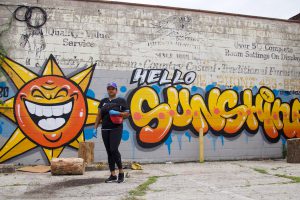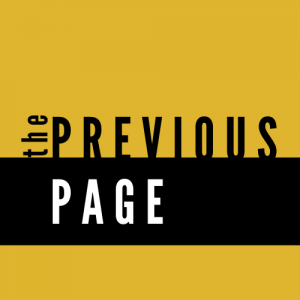Intentional Language
Roz taught me, very quickly, that our society’s labeling of those who suffer from structural violence (whether those labels are drug addicts, those with drug abuse disorders, druggies, or crackheads) can further the grasp that structural violence has on these individual’s lives. In one of our conversations, I accidentally used the word “addict.” Roz graciously answered my question and then stated:
I just want, for the record, like even the language to me it’s very, very important. So, like, the word addict is probably not a term that people in a harm reduction like to use only because I mean, maybe instead ‘someone with some substance abuse disorder’ or ‘someone who uses.’ Addict so like, negative.
This section is going to discuss the importance of language, and how our use of specific phrases and labels can be a way to visualize how ingrained structural violence is in our society. Our society’s labeling of individuals is an act of scapegoating, directing attention away from the violence of the pharmaceutical industry.
In one of our conversations, Roz told me about the data she collected in her community to inform herself and other individuals about potentially bad batches of drugs. The word “Sunshine” repetitively came up. I learned through her stories that Roz colloquially goes by the name “Mama Sunshine.” The residents of Kensington refer to her in this way because she addresses individuals interacting with the harm reduction community as Sunshine. When I asked her how this name came about, Roz told me that she needed a term that could apply to everyone she meets that does not have a denigrating tone or connotation, like babe, hon, or addict.
She said others have taken up her use of the label Sunshine in the harm reduction community, so now an individual who utilizes the name Sunshine is associated with love, compassion, and harm reduction technologies such as Narcan. As Roz stated, “It’s [the term Sunshine] always coming from a place of acceptance.” With this role and trust from her community, Roz has reversed approximately 516 Sunshine overdoses. This is her commitment to ensuring all individuals’ safety, regardless of position in society or role in her neighborhood.
Referring to an individual with a drug addiction or drug abuse disorder as a Sunshine, I argue, is one mechanism that can acknowledge the structural violence present in Philadelphia neighborhoods and attempt to dismantle it. I recognize and appreciate the lesson Roz taught me; I will now only refer to these individuals as Sunshines because of this insight.

Language Yields Creation
Roz’s creation and use of the term Sunshine functions to refuse society’s labels that enable and perpetuate structural violence. We need to realize that how we represent things and people, whether through images, graphs, charts, or verbal labeling, impacts Sunshines, the rest of society, and us.
Merrill Singer succinctly articulates this in his text The Social Value of Drug Addicts: Uses of the Useless; Singer is a medical anthropologist who investigates the links between the Sunshine, processes of social valuation, and “Othering” (Singer 2014). In this text, Singer questions, “What are the uses for the useless?” and, “Why (and to whom) is it useful to have some people defined as socially void of value?” (Singer 2014, 8). The categorization of an individual as useless, and the association of a Sunshine with that adjective, is a social act in which we create an idea, imagery, and data of a Sunshine to solidify our social construction of health. By analyzing how society creates the imagery and narrative of drug “addicts” rather than Sunshines, we can see the mechanisms in which structural violence acts.
Specifically, the narrative that drug abuse yields poverty rather than the converse instills fear in the population of those who use substances. The fact that poverty and other relationships driven by structural violence often precede drug abuse, specifically in areas such as the Philadelphia Riverwards, is commonly and purposefully left out of these narratives. This absence allows the actors of structural violence not to acknowledge their mistakes, which renders the relationships that encompass structural violence to remain invisible.
There are multiple relationships present in Philadelphia where proper contextualization would enable us to see how structural violence profits through the social construction and imagery of the drug addict. Our society “others” individuals, categorizing them as useless when the design of healthcare in society does not fit them. Labels of drug addicts, rather than Sunshines, “reflect a simplified worldview of binary opposites composed of the healthy mainstream and its malignant deviants” (Singer 2014, 208). Rather than bend our conception of healthcare and social assistance, society acts to create rigid boundaries. We can see this in Philadelphia through the battle over the legalization of the non-profit Safehouse. The creation of a healthcare system that is contrary to that traditionally practiced in our national hospitals and clinics is being cited as illegal.
Additionally, by casting specific populations and geographic areas as useless, potentially dangerous, and burdensome to society, systems of power do not have to acknowledge their historical mistakes. This absence of reflection and accountability enables the hands of structural violence to stay hidden as the spotlight of blame shifts from those of power to those subject to power. Singer articulates how these dynamics directly impact Sunshines when he states:
Targeting drug users as prime disruptors of urban social harmony causing our streets and homes to feel unsafe, our sense of community to be a pale reflection of earlier times, and our inner cities to become eyesores that should be avoided by suburbanites, moreover, helps to render less visible the structural factors that have driven urban transformation, such as the role the transnational globalization of capital has played in robbing cities of jobs with decent salaries (Singer 2014, 216).
Rather than view the deindustrialization of the Philadelphia region, in addition to racism present in housing, urban planning, and environmental toxicity, as trauma that could evoke drug use, society creates the drug user as the enemy, the feared, and the cause of their problems.
Embodiment of Violent Representations
Structural violence produces narratives that individuals cause their own problems (like propagating an incorrect, causal relationship between drug use and poverty), which is in opposition to the anthropological argument of embodiment. The idea of embodiment argues that the body is not a boundary to social relations (Taylor 2005); rather, the body molds to social relations (Lock 2017); in situations of inequality and violence, this can have devastating consequences for the health and wellbeing of the human body (Lock 2017). Nguyen and Peschard (2003) describe the processes of embodiment, and its harmful effects on the body, in the following:
Despite evidence of the growing impact of violent conflict on world health, the effect of politics on population health has been most widely understood in terms of how particular policies, such as taxation, health insurance, and access to schooling, inflect disease rates. Recasting the relationship between disease and social inequality as the embodiment of social relations adds value to the core epidemiological finding by allowing affliction to be related to prevailing ideologies that inform policy, configurations of social violence, the way misfortune is conceptualized and managed, and how meaning systems influence how individuals interpret their bodily states, seek care, and fashion themselves according to prevailing moral notions. Inequality is more broadly viewed as a form of violence that can be exercised directly on the body or indirectly through risk and blame (Nguyen and Peschard 2003, 459).
In her text Recovering the Body, Margaret Lock expands on these notions of embodiment by suggesting that embodiment is dependent on “time and space,” which emphasizes the role of “environments, histories, social/political variables, and medical knowledge of all kinds” in understanding the body (Lock 2017, 5). She emphasizes the importance of “local biologies,” defined as “biological difference among people that results from bodily responses to differing environments over time and across space. Such differences are not genetically determined, and a great number are of no consequence, although some bear profoundly on health and illness” (Lock 2017, 5). Appropriate knowledge of embodiment, and the use of “local biologies” as suggested by Lock, can be a tool applied in neighborhoods such as Kensington to save lives by dismantling the relationships that enable structural violence.
Lock’s concept defines the process that Kensington residents have endured during the last century; they are not individually responsible for the violent health effects that plague their communities, but it is instead an aggregate of the environmental factors (i.e., structural violence).
Anthropological ideas of embodiment such as Lock’s tie back to Singer’s earlier argument because, in Kensington specifically, individuals are at risk of embodying the representations of health that society constructs due to the structural violence frameworks that exist. Timothy Mitchell (1995) would describe this as a manifestation of a “method of truth and order;” Mitchell’s use of this phrase describes how categories have the power to create the “realities” that they construct. There are countless examples of this in Philadelphia, such as the labels that society places on bodies, including un-informed community health designs, categorization of bodies, and working counterproductively against harm reduction technologies. In this way, ill-contrived categories and categories created by those who wield power serve as violent structures.
Language as a Self-Fulfilling Prophecy
Roz’s promise of acceptance to all goes against societal notions of health; it directly confronts the false claim that acceptance of an unhealthy behavior enables it to continue. Roz complicates this notion by articulating that there is, and always will be, drug addiction present in communities. Society needs to learn to take an active rather than reactive approach to Sunshines.
Following Lock’s model, the methods of harm reduction can be seen as a mechanism to combat embodiment of structural violence by meeting bodies where they are “in time and space” (Lock 2017); to Roz, it is seen as equivalent to her self love techniques as they both have the influence to rid the body of current, and potential future, energies. A crucial aspect of the harm reduction model that is employed by nonprofits and community activists such as Roz herself, acknowledges that drugs are a part of an individual’s life and immediate future. Imagining an immediate, accessible future where individuals do not use opioids or heroin is not realistic to Roz. This societal ideal, promoted by our social construction of health, is not realistic because of the entanglement of the drug with the workings of the human body and the dependencies that each perform on each other; it is not realistic because of embodiment of structural violence and the hole that drug use has filled for many individuals.


